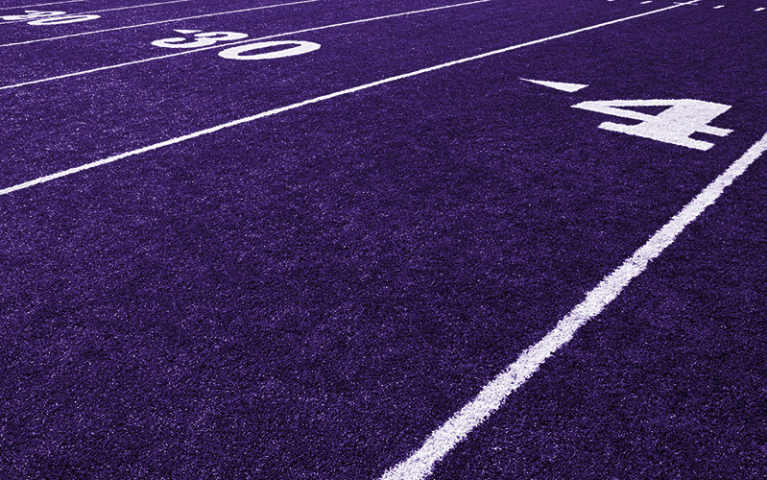
A famous picture from Super Bowl I, shared by SB Nation, features Buffalo Bills quarterback Len Dawson taking a drag off his cigarette during the big game's halftime.
The Bills lost and Dawson's performance was just okay: 16 of 27 passes completed for 210 yards, with one touchdown and one interception. We can't blame the cigarette, but even so, things have changed a lot since 1967.
Today, training, equipment, meals, even the way NFL players sleep, are scrutinized as ways for teams to gain any possible edge over the competition.
Ways Football and Training Have Changed:
-
Green Bay Packers wide receiver Max McGee is said to have ignored curfew and spent the night before the first Super Bowl partying until 6:30 a.m. He "snagged a little sleep," Sports Illustrated recounts. He figured he'd ride the bench all day anyway. But when a teammate injured his shoulder, McGee was called in—and scored the first touchdown in Super Bowl history.
Today, that wouldn't fly. The Miami Dolphins and New England Patriots provide nap rooms, according to Sports Illustrated. The Seattle Seahawks wear sleep monitors. The Seahawks' Director of Player Health and Performance, Sam Ramsden, told the New York Times, “I've always had a belief that sleep is one of the main ways your body recovers. Some of the best players on the team are the best sleepers." -
Players and teams are waking up to the dangers of sleep disorders, too. According to the Nature and Science of Sleep, former NFL players have a greater risk of sleep apnea than the general population. A 2003 study in The New England Journal of Medicine found a third of NFL players tested had sleep apnea, and the 2004 death of Reggie White, a defensive end for the Green Bay Packers and the Philadelphia Eagles, was partly attributed to his sleep apnea, according to USA Today. The NFL Player's Association began sponsoring sleep apnea screening for current and former players in 2006, according to the L.A. Times.
-
Today's equipment is far lighter and more streamlined than it once was. Players used to sweat through training camp and two-a-day practice sessions (and, of course, the games themselves) in heavy equipment, including bulky metal knee braces and burdensome plastic shoulder pads. Worst of all, remarks Bill Contz, who spent six seasons as an NFL offensive lineman in the 1980s, was the rigid padded "girdle" that strapped tightly around his hips and tailbone, and basically kept him from being able to move like a normal human being, which is problematic when you're trying to block an onrushing linebacker. Not to mention it was a "fashion nightmare," Contz remembers, and "gave the appearance you'd had an accident in your pants."
-
Today's players get up-close and personal a little less than they used to during practice. The NFL replaced two-a-day, full-contact practices with lighter practice sessions of one full-contact padded practice a day and a walk through period. Former NFL analyst Michael Lombardi and others complained that the lack of preseason aggression will leave players unprepared for the game, but NFL leaders hoped the decision would reduce injuries from full-speed contact drills.
-
Gone are the days of steroids. As Vice reports, Tampa Bay Buccaneers lineman Steve Courson claimed that, at one time, “75 percent of the linemen in the NFL [were] on steroids and 95 percent have tried them." Testing began in 1987, the Washington Post notes, with disciplinary actions issued starting in 1989. That curbed 'roid use drastically.
-
According to NFL Rush, many players in the 1950s stayed away from the field during the off-season. These days, training doesn't start with the preseason. Training camps remain active and keep the players in shape before and after the season. Staying in top form has become a year-round job.
Want even better sleep? Sleepers who routinely use their Sleep Number® smart bed features and SleepIQ® technology get almost 100 hours more proven quality sleep per year.*
Like diet and exercise, quality sleep is essential for optimal wellbeing and performance. Because everyone's sleep needs are different, Sleep Number® smart beds sense your movements and automatically adjust firmness, comfort and support to keep you both sleeping comfortably. Find your Sleep Number® setting for your best possible night's sleep, and if you own a Sleep Number® bed, log in to your Sleep Number® Rewards account to see your exclusive offers, refer friends and more.
*Based on internal analysis of sleep sessions assessing sleepers who use multiple features of Sleep Number® products. Claim based on sleepers achieving over 15 more minutes of restful sleep per sleep sessions.